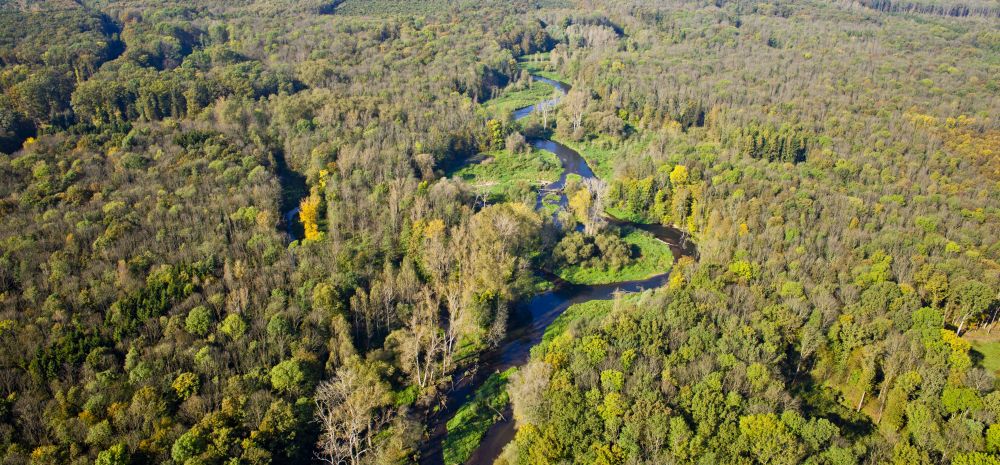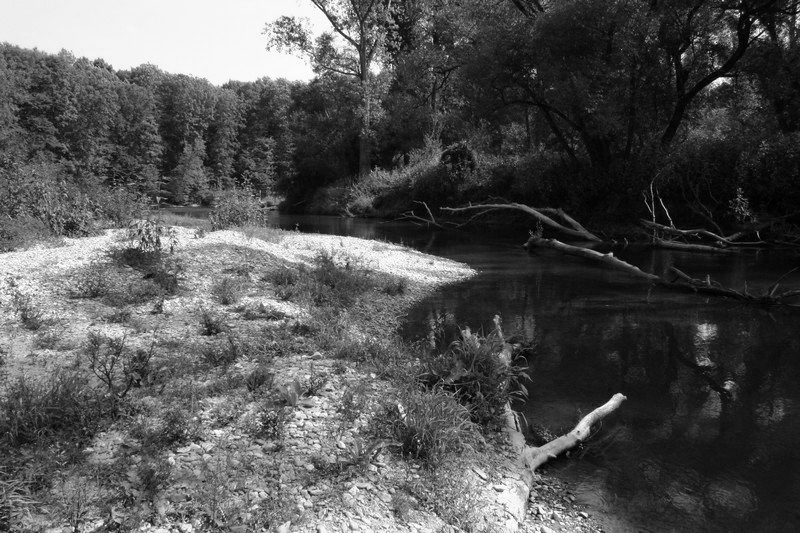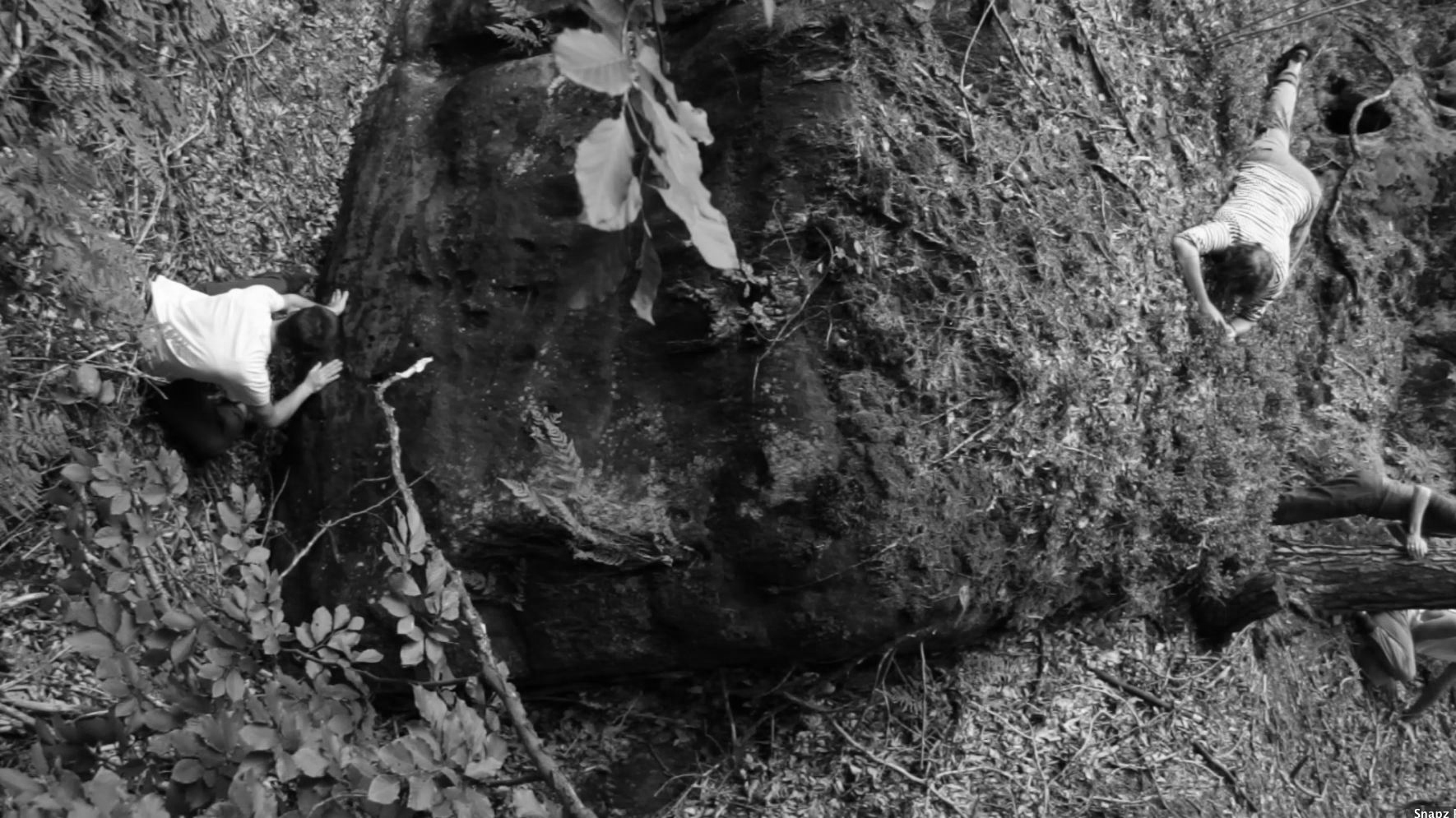
The Morava River
s e j n b o h e m i ae r o s a
S i t e B o d y E x p l o r a t i o n
The Morava River – The Czech Republic / Moravia
International Interdisciplinary Open-Air Workshop for artists and dancers exploring the relation between body, art and landscape
led by Frank van de Ven and Milos Sejn
guest artist Günter Heinz
Supported by Bohemiae Rosa Foundation –
Nature Conservation Agency of the Czech Republic –
– Litovel Morava River Basin Protected Landscape Area – The Olomouc Centre for Ecological Activities

The Morava River
Since 1995 Milos Sejn and Frank van de Ven have co-operated in their bi-annual interdisciplinary open-air Body-Site-Exploration projects in various National & Cultural Reserves in the Czech Republic (Kokorin Valley, Plasy Monastery, Bohemian Karst, Bechyne Monastery with the Luznice River, Bohemian Paradise, Sumava and Krkonose Mountains, Kuks Spa, The Elbe Sandstone Mountains) known as the Bohemiae Rosa Project.
This
edition of the Bohemiae Rosa Project
will take place in the
Moravia
area known since the early
Middle
Ages as "Moravia Magna"
(Greek:
Μεγάλη Μοραβία).
In this river landscape we
find virgin forests, swamps, old meanders, meadows, springs, caves but also
areas romantically humanized using artificial structures, such as ancient roads, gates,
obelisks, hills and gardens.
Walking and working in the
Morava River Basin
we investigate the numerous relations between Body and Landscape and their
significance to contemporary (Performing) Arts.
The program will include:
• MB -(mind/body, muscles/bones) dance training
• practice of and reflection on physical and mental training
• walking and wandering, silent walk, pilgrimage and nocturnal journeys
• various modes of experiencing body, movement and landscape
• investigating divergent senses of space and time
• peripatetic records, drawing, writing, immediate contact with surroundings
• mental topography of a location, myth, archaic mind and genius loci
• geology, archaeology and history of the Bohemian Paradise as a model of self: layers, vertical connections and labyrinths
An integral part of the workshop will be the individual artistic projects that participants are encouraged to formulate and work on for about 1 to 2 hours a day. (in the fields architecture, landscape art, dance, performance, photography, sculpture, theatre, visual arts, biology and natural history). The workshop leaders are available to guide and support these processes.
The body is a landscape in itself moving within the larger frame of the given surrounding environment. The vertical and horizontal layering of the (historical) landscape invites us to reflect upon our own layers and connections of self and imagination.
Participants profile: artists and advanced students working in performance, dance, landscape art, sculpture, photography, architecture, theatre, visual arts, biology and natural history. Selection of participants will be based on c.v. and motivation.
No previous (dance) training is necessary but the workshop will be physically demanding. A good overall condition is required.
25 – 31 August 2017, arrival in the evening of 24 August
Meeting
Place:
Slunakov –
the
Olomouc Centre for Ecological Activities
Landline: +420
585 154 711
GPS: 49°38'29.182"N, 17°11'59.553"E
Olomouc is easily accessible by train or bus. The nearest airport is Brno or Ostrava. From Olomouc take a local bus MHD nr. 18 and 20 to Horka na Moravě.
The number of participants is limited. We recommend early applications.
Bring yoga mat, backpack for day hikes, raincoat and hiking boots.
All participants must have a personal insurance and must provide a copy of this before start of the project.
No
previous (dance) training is necessary but the workshop will be physically and
mentally
demanding,
therefore
a good overall condition is required.
APPLICATION
To
apply send name, a short c.v. and a motivation letter to
Frank van de Ven
frank.bwa@xs4all.nl
or
Milos Sejn
milos@sejn.cz.

From
Bohemiae Rosa Project – September 11
2003 Bohemiae Rosa V
Bohemian Paradise
video
E X T
E N D E D
I N F O R M
A T I O N

The Morava River
The Morava
River
Wikipedia
The
Morava (German:
March,
Hungarian:
Morva,
Polish: Morawa)
is a
river in
Central Europe,
a left tributary of the
Danube. It is
the main river of
Moravia, which
derives its name from it. The river originates on the
Králický Sněžník
mountain in the north-eastern corner of
Pardubice Region,
near the border between the
Czech Republic
and
Poland and has
a vaguely southward trajectory. The lower
part
of the river's course forms the border
between
the Czech Republic and
Slovakia and
then between
Austria and
Slovakia.
Geography:
The lowlands formed by the river are the
Upper Moravian Vale
or Hornomoravský úval and then the
Lower Moravian Vale
or Dolnomoravský úval in
Moravia,
the
Moravian Field
or Marchfeld in
Lower
Austria,
and the
Záhorie
Lowland or Záhorská nížina in Slovakia. The latter three are actually continuous
parts of one large basin, forming the major part of the
Vienna Basin.
In the Czech Republic, there are some larger towns
lying
upon Morava, particularly
Olomouc,
Kroměříž,
Otrokovice,
Uherské Hradiště
and
Hodonín.
Downstream from here, the river
flows along sparsely
inhabited,
forested border area, all the way to its outfall into the Danube, just below the
Devín Castle
at the outskirts of the Slovak capital
Bratislava.
After 354 km of its course,
Morava feeds the
Danube by an
average discharge rate of 120 m3/s, gathered from a drainage area of 26 658 km2.
The Morava river is unusual in that it is a European
blackwater river.
The river's longest
tributary is
Thaya (in
German)
or Dyje (in Czech), flowing in at the
tripoint of
Austria, the Czech Republic and Slovakia. The biggest
tributary
from the left is
Bečva.
Naming and history: Though the German name March may refer to Mark, "border, frontier" (c.f. English march), the river's name more probably is derived from Proto-Indo-European *mori, "waters" (mare). It was first documented as Maraha in an 892 deed.Indeed, the lower part of the river, downstream of the confluence with the Thaya at Hohenau an der March, which today marks the Austro-Slovakian border, is one of the oldest national boundaries still extant in continental Europe: it was the eastern boundary of the Carolingian Empire with the Avar Khaganate around 800 and from the 10th century onwards marked the border of the Imperial marcha orientalis, later Duchy of Austria with the Kingdom of Hungary (within the Habsburg Monarchy during 1526–1918 due to the imperial expansion of the Austrian lands). At the times of the Cold War, this section of the river was part of the Iron curtain, being the frontier between Austria and Czechoslovakia.
Litovel Morava River Basin Protected Landscape Area: Litovelské Pomoraví (Czech: Chráněná krajinná oblast Litovelské Pomoraví, usually abbreviated as CHKO Litovelské Pomoraví) is a 96 km2 (37 sq mi) protected landscape area established on 15 November 1990, in the floodplain of the Morava River, north of Olomouc, in the Czech Republic. In the centre of the area lies the ancient city of Litovel, nicknamed "Venice of Hanakia", from which the protected area has derived its name.
The ecological backbone of the protected landscape area is the naturally meandering Morava, in floodplain forests branching out and forming a complex system of permanent and temporary river arms, a so-called anastomosing river system. The uncontrollability and power of regular floods in the Middle Ages led Hanakian farmers to building a wreath of dikes around the forest where it meets agricultural land. Thanks to these the floodplain forests of Litovelské Pomoraví have within living memory offered significant flood protection to surrounding villages and the cities of Olomouc and Litovel, as they form an enormous natural polder catching and storing the overflowing water without causing damage.
West of Litovel the floodplain forest complex passes into the picturesque landscape around Nové Zámky with a set of tastefully arranged small romantic buildings from the 19th century (Obelisk, the artificial ruins of Rytířské síné, Přatelství church, the artificial cave of Podkova). A prominent scenic element here is the calcareous ridge of Třesín hill, sharply falling into the Morava river floodplain. The strongly karsted Devonian limestone of Třesín enabled the formation of a complex cave system (Mladeč caves) and a unique geological phenomenon called "buried karst" in the floodplain. In the northern part of the protected landscape area the floodplain forest is connected to the large area of Doubravy with hilly beech-oak and oak-hornbeam woods which reach up to the Úsov castle.
Contacts and further information
https://en.wikipedia.org/wiki/Morava_(river)http://www.openstreetmap.org/relation/1741294
http://www.casopis.ochranaprirody.cz/en/z-nasi-prirody/the-litovelske-pomoravi-litovel-morava-river-basin-protected-landscape-area/
https://en.wikipedia.org/wiki/Great_Moravia
Sluňákov / The Olomouc Centre for Ecological Activities:
The idea of Sluňákov and
its activities is tied to efforts to strengthen the bonds between people and
nature and the environment in which they live. I believe this pursuit is
important because people are natural beings rooted to the living world and bound
by a fragile web of
relationships
with everything
they
create. To
put
it simply: nature would manage just fine without human beings.
There
is hardly
anything
in the living world about which we can say the
same thing.
And this is precisely where I
find the meaning of Sluňákov’s mission – about the sense to be humble and remain
preferably silent. What is Sluňákov? It might be easier to say what it is not.
It is not green; after all, nature is full of colours. It is not a political
party;
Sluňákov
is an advocate of everything that lives in
nature, with an
awareness
of its
fundamental
life-giving role. Sluňákov isn’t even a movement; it doesn’t
want
to promote
something
at any cost, it doesn’t aim to twist anybody’s
arm. Instead, it would prefer
to sensitively appreciate and cautiously offer a concept of
nature in which all
creatures exist in a web of intricate and variable relationships. In this way
nature offers people its full bounty.
Sluňákov’s goal is to remain a viable organisation that
provides
valuable
services
to the local community – an organisation that reminds us that all of our
strengths
and weaknesses, joys and sorrows, all of our
buildings, inventions and
activities are based on the possibilities provided by nature.
I am extremely grateful to have a job where I don’t stare at
the clock waiting for the end of the day to arrive; to have work that is
meaningful to me and to be surrounded by wonderful fellow workers. I would like
to say thank
you
to all of them, and would also like to invite you to visit us to talk about our
common
world and our joyful existence in and with nature.
Michal Bartoš, Director

From
Bohemiae Rosa Project – September 11
BIOGRAPHIES
Milos Sejn
works in the fields of visual art, performance and study of visual perception.
From the beginning of the 1960s he took pictures, drew, collected and described
his observations of nature during his wanderings through the Czech landscape.
Currently he teaches mixed media and the relationship of nature and art as
intrinsic needs of the mind, and focuses on immediate creative possibilities,
based upon relations between historical humanized landscapes and intact nature.
CD ROMs: Colorvm Natvrae Varietas (Centrum for Culture and Communication in
Budapest c3, 2000); Make Your Own Island/Make Your Own Forest (Utrecht School of
the Arts, Institute for postgraduate and professional higher education in the
Arts, 2001); Books:
Being
Landscape, 2010
Frank van de Ven
is a dancer and choreographer who spend his formative years in Japan working
with Min Tanaka and the Maijuku Performance Company. In 1993 he founded together
with Katerina Bakatsaki
'Body Weather Amsterdam', a platform for training and performance. Since
1995 he conducts with Milos Sejn the interdisciplinary Bohemiae Rosa Project,
connecting body and landscape with art, geology and architecture. Interest in
dance and theory led to the 'How to make yourself a Dancing Body Without Organs'
Project. Together with Peter Snow (Monash University) he performs the famed
Thought/Action Improvisations. An ongoing collaboration exists with
musician Daniel Schorno, artistic director of Steim Amsterdam.
Films
(video and 16mm): Dancing Plasy Times 8, CI-VIT, LOM and NOUGHTS.
Günter Heinz
born in Zeitz, studied
mathematics in Halle, music in Dresden and Berlin. Initially active as
mathematician at various universities, 1983 doctorate. Since 1987 freelance as a
musician, premiere of numerous contemporary compositions, concerts with
improvised music, radio and CD recordings in Germany (organic music),
Switzerland (For4Ears) and USA (ALEA) .1992-93 he was a guest composer at the
electronic studio of the Musikakademie Basel. Collaboration with the
Kammerensemble Neue Musik Berlin, Neue Horizonte Bern and SEM Ensemble New York.
His compositions were performed among others. In Berlin, Moscow, Madrid and the
USA. Lessons in Malta and Sardinia. In the field of jazz he played among others.
With Bernd Köppen, Lou Grassi,
Hartmut Dorschner, Kent Carter, Bill Elgart, Michael Lythel, Agusti Fernandez
and Fred van Hove. He is artistic director of the Festival of Free Improvised
Music in Dresden.
Dictionary definitions
*site n., pl. -s [Latin situs "place, position", from sinere "to leave, place, lay"] 1. the actual or planned location 2 the place or scene of something (a camp site) / site vt., to place on a site or in position: locate
*body n., pl. -ies [OE, bodig, cask] 1. the whole physical substance of a man, animal or plant 2. the trunk of a man or animal 3. a corpse 4. [Colloq.] a person 5. a distinct mass [a body of water] 6. a distinct group of people or things 7. the main part 8. substance or consistency, as of liquid 9. richness of flavor
*landscape n., pl. -s [Dutsch landschap, from land + -schap "-ship"] 1. a picture of natural inland scenery 2. a portion of land that the eye can see in one glance
*wander vb., wan-dered, wan-der-ing [OE, wandrian] 1. to move about aimlessly or without a fixed course or goal: ramble 2a to deviate (as from a course): stray 2b to go astray morally: err 2c to lose normal mental contact (as delirium or madness)
*walk n., pl. -s [vb OE, wealkan "to roll, toss"] 1. a going on foot (go for a walk) 2. a place, path, or course for walking 3. distance to be walked 4a manner of living 4b social or economic status (various walks of life) 5a manner of walking 5b a gait of a four-footed animal in which there are always at least two feet on the ground
![]()
Milos Sejn / MORAWA